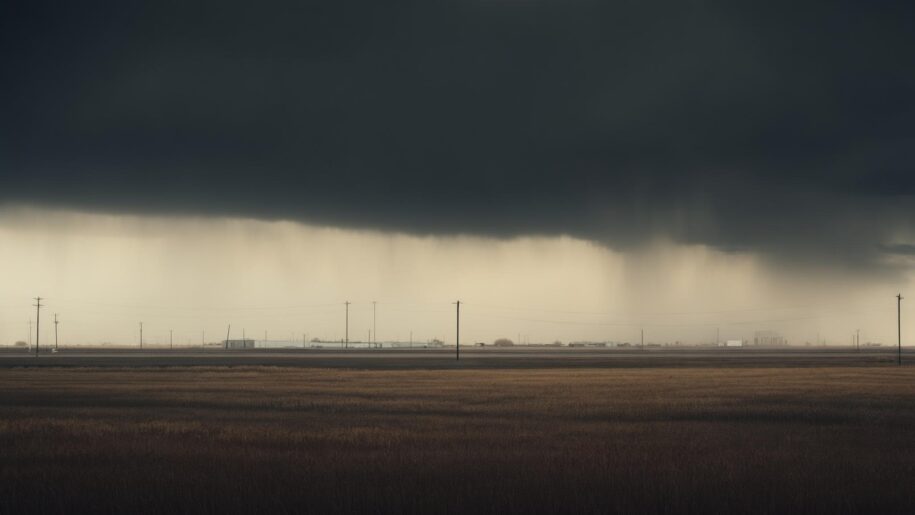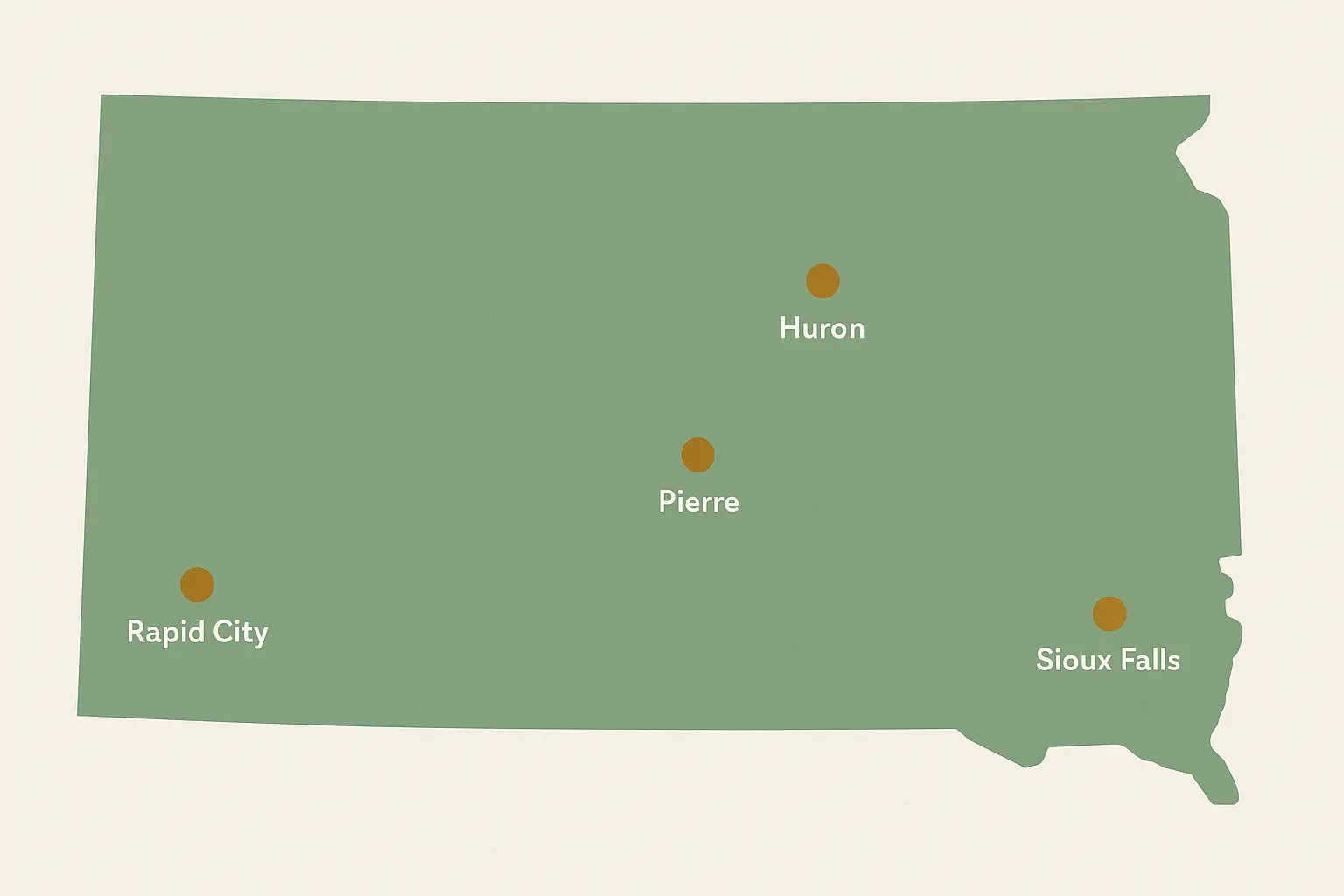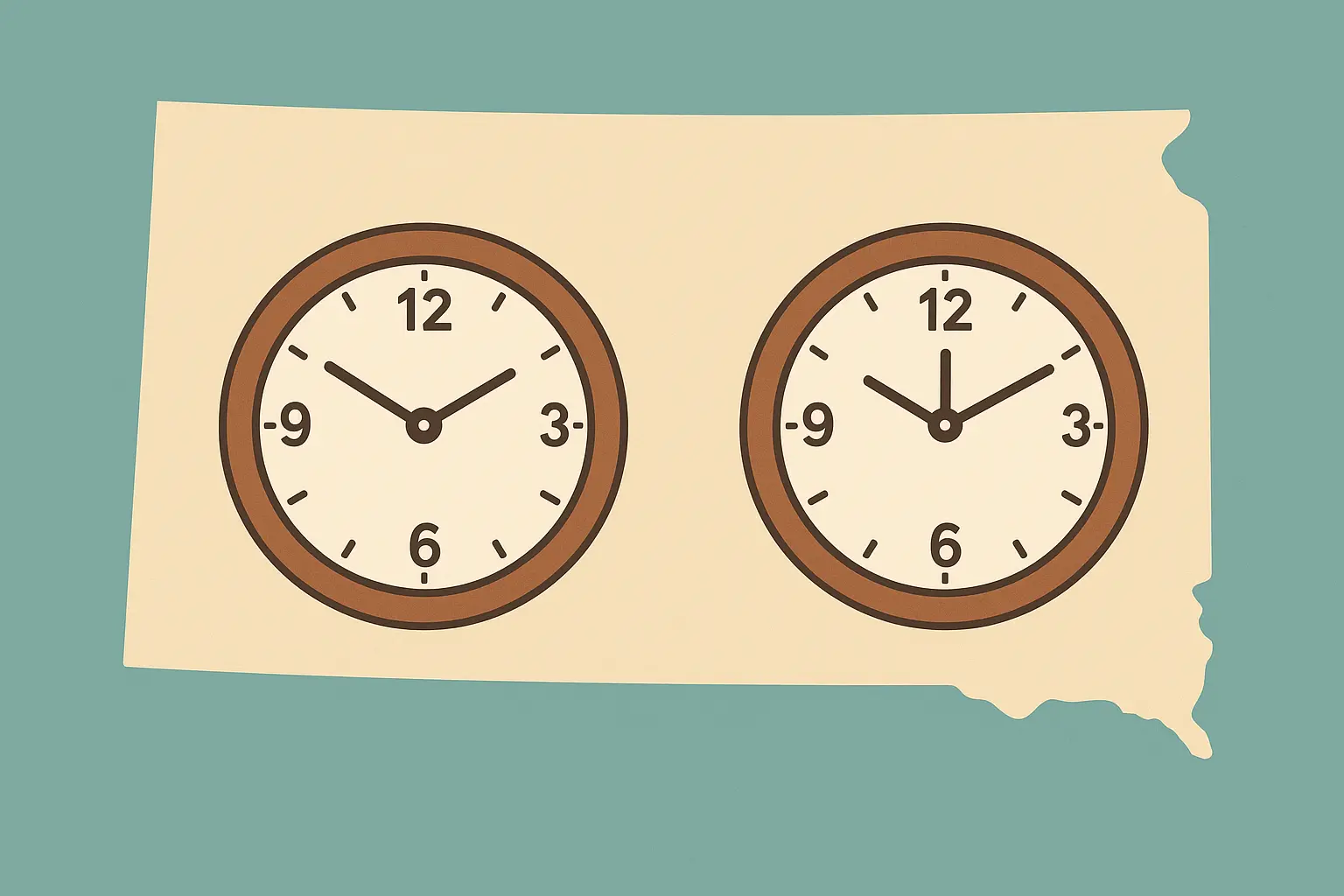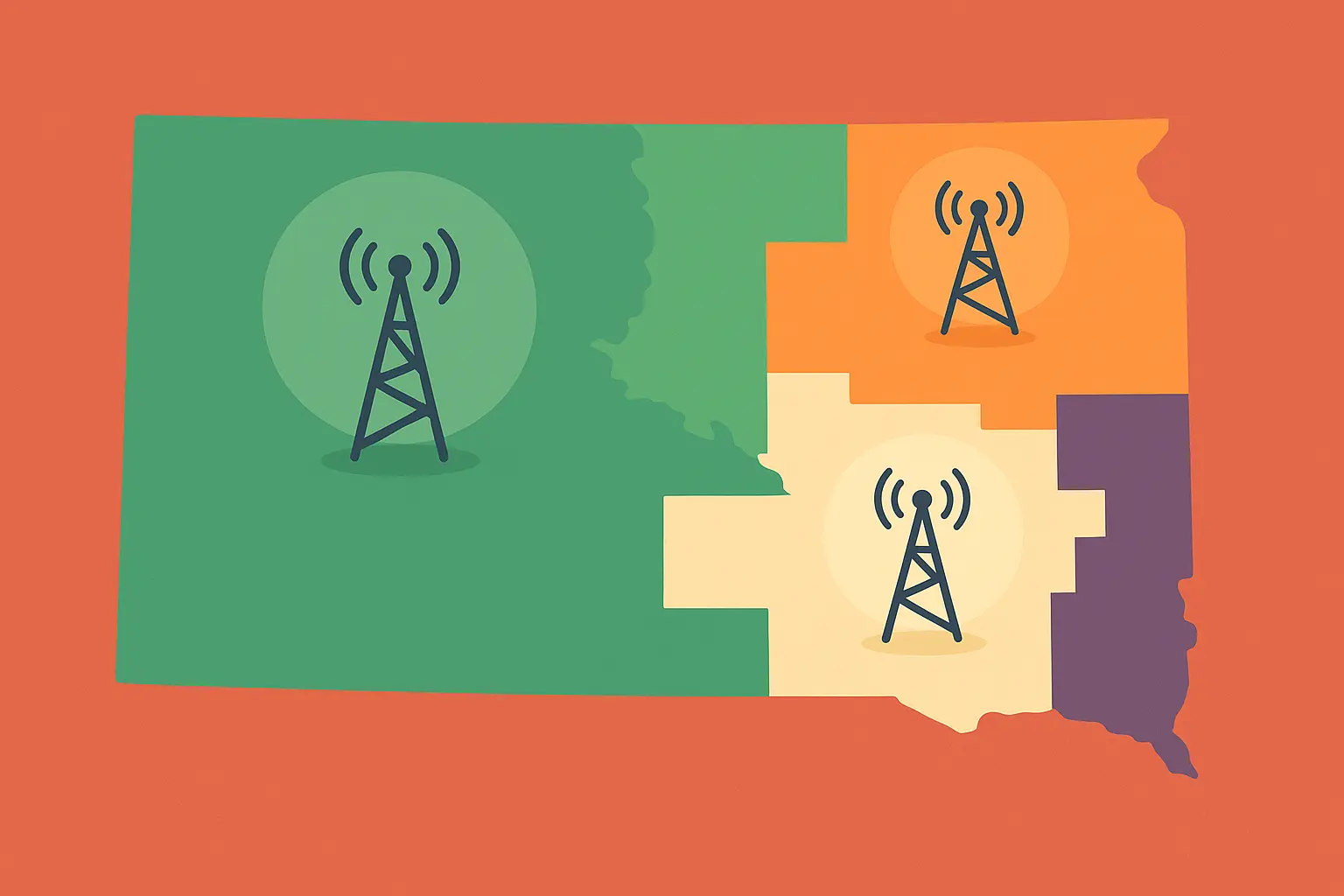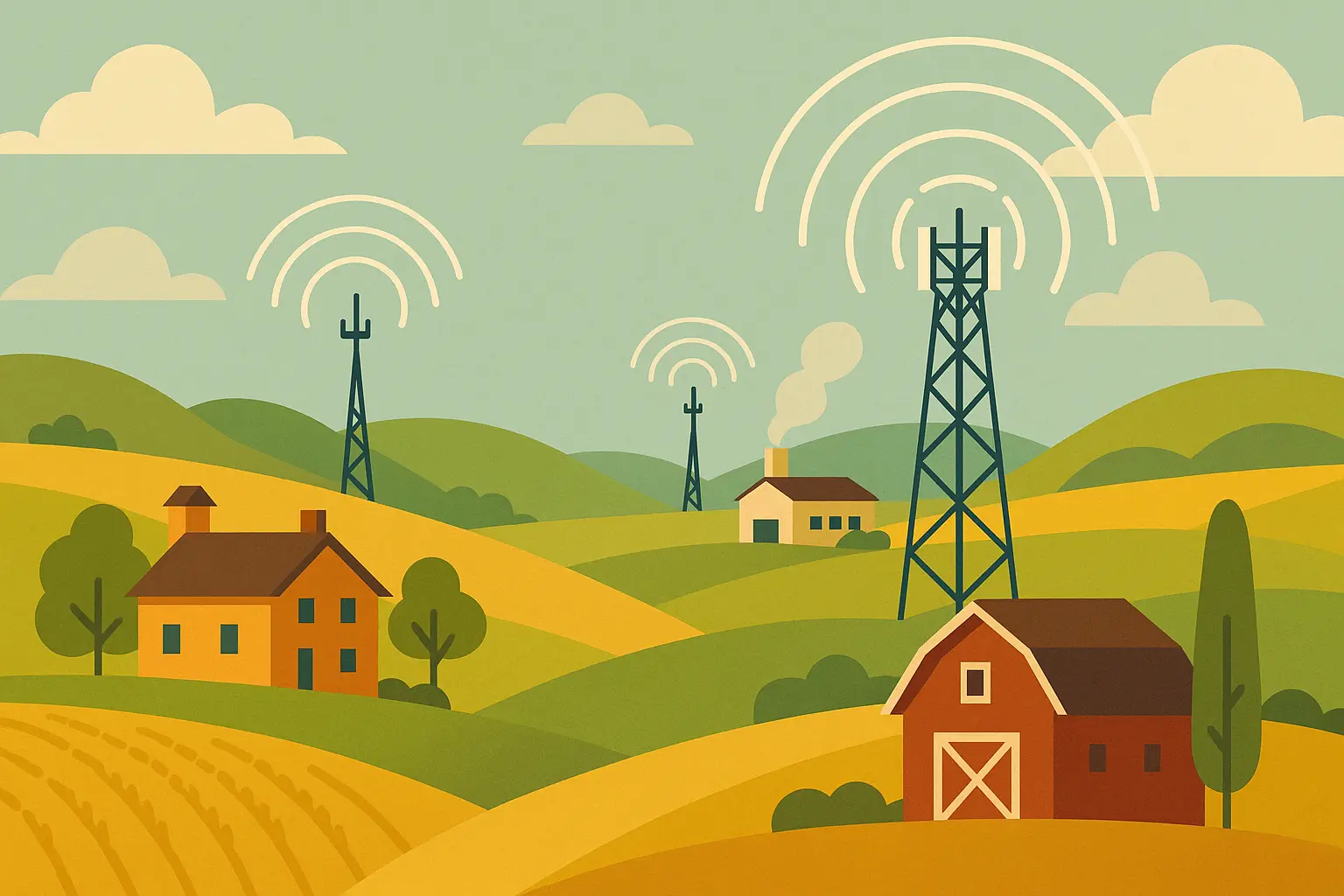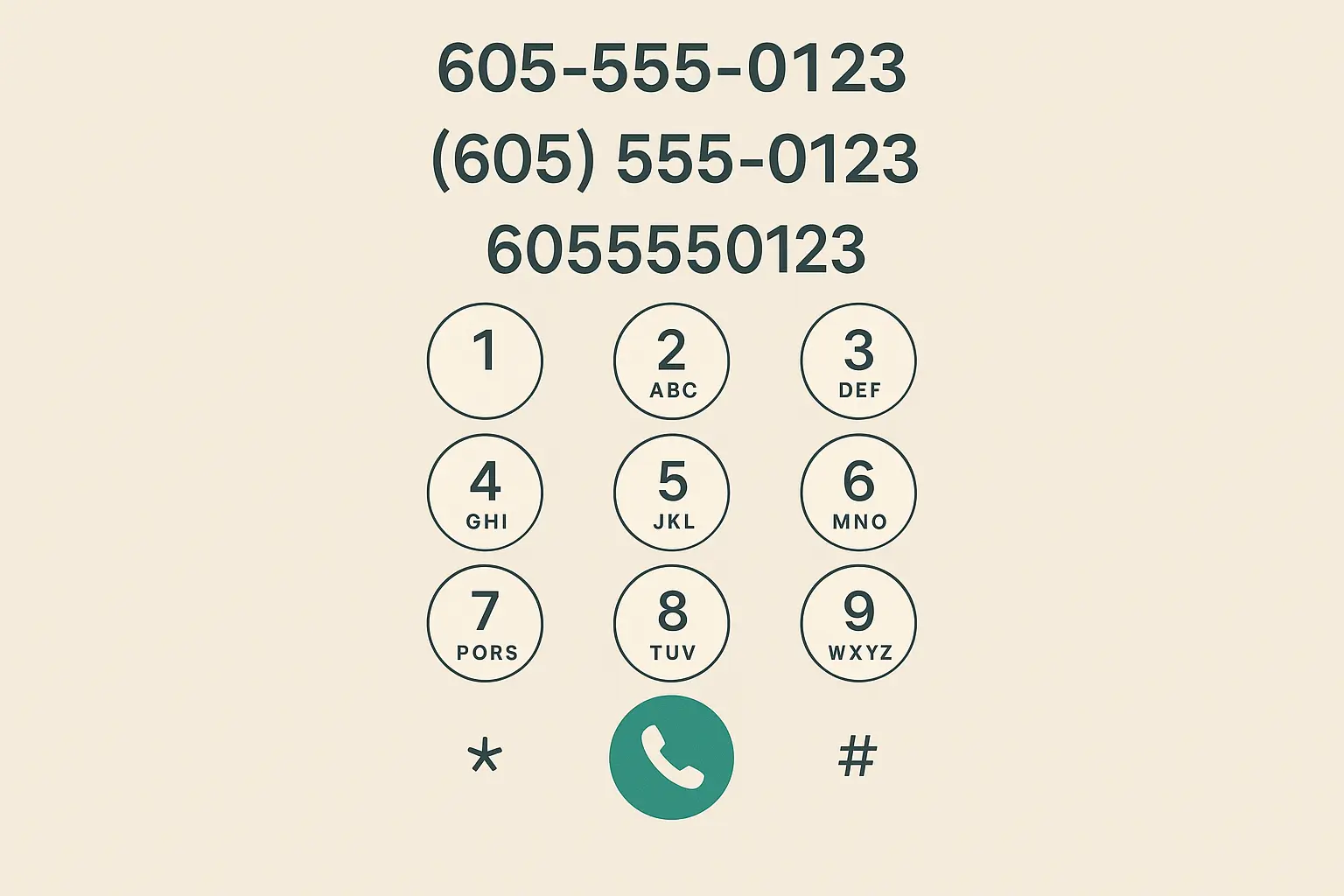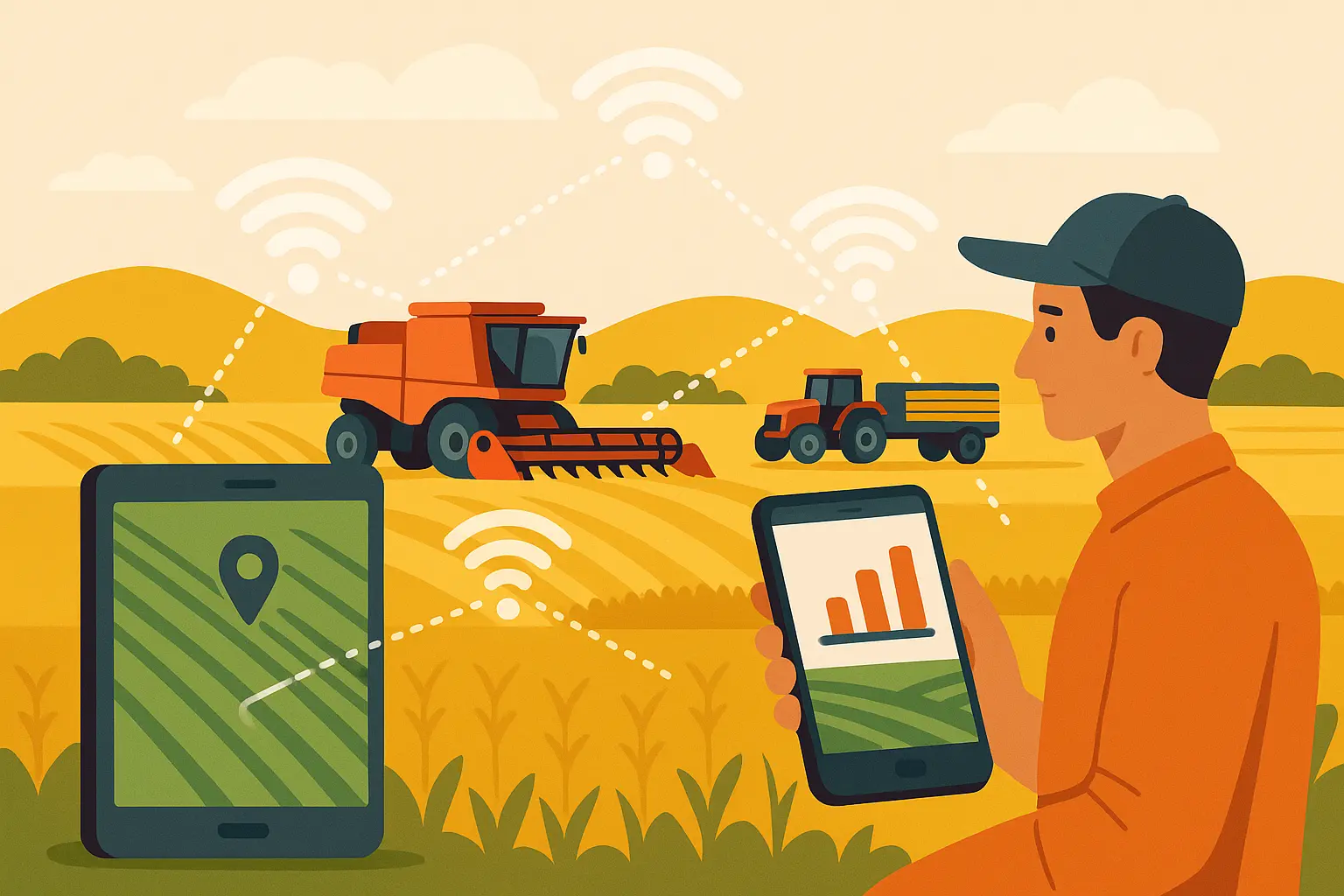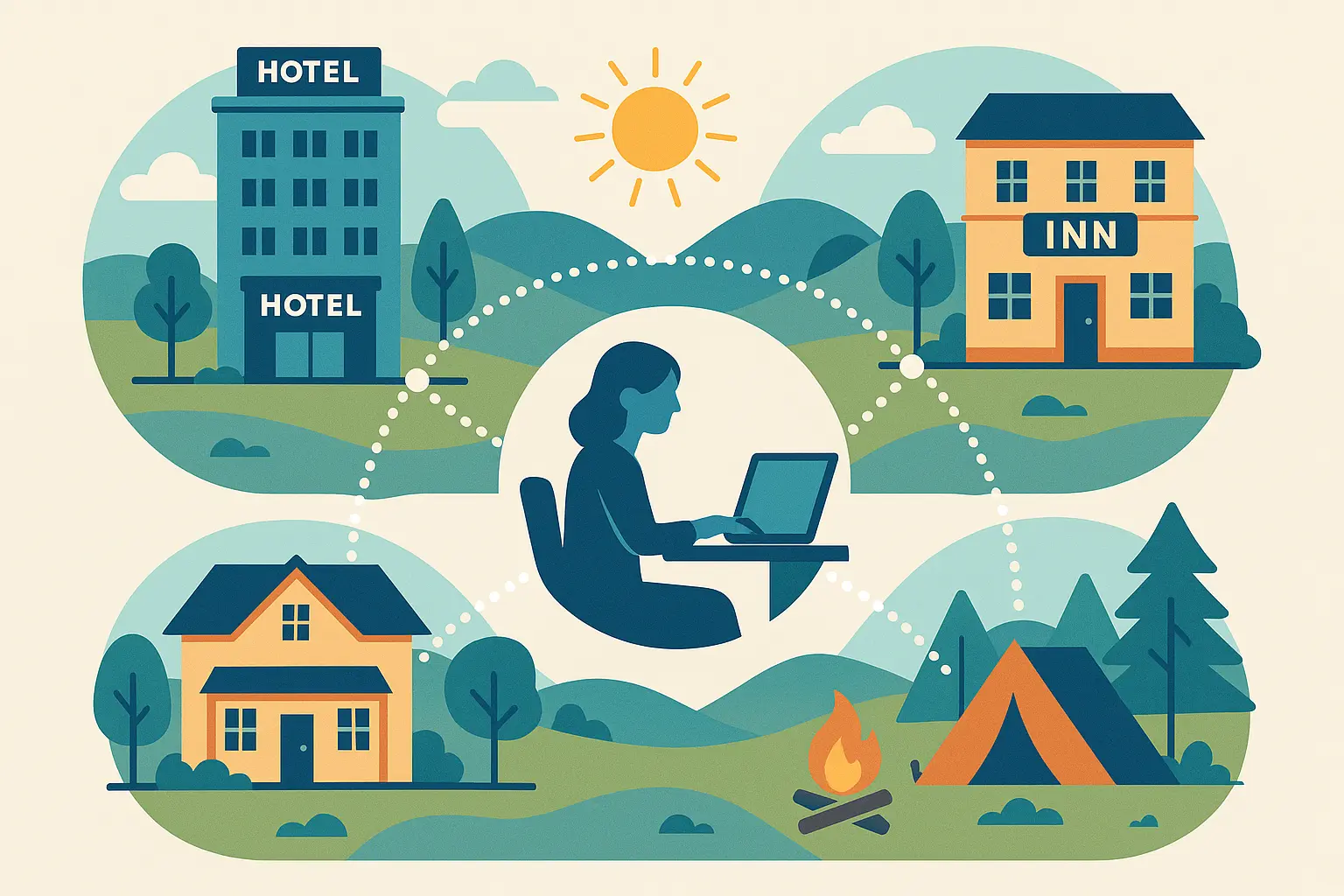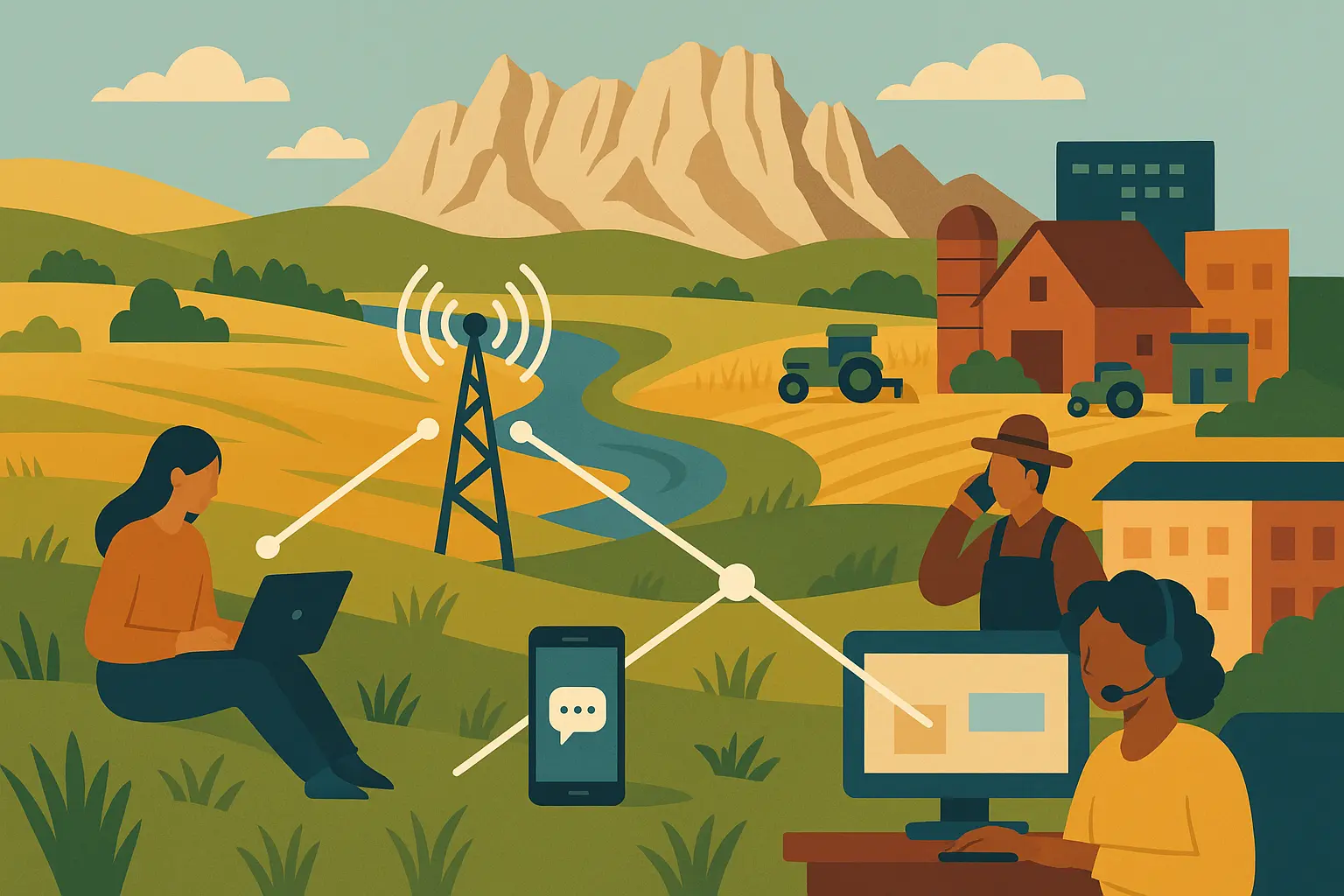If you’ve ever tried coordinating a meeting between someone in Sioux Falls and Rapid City, you’ve probably discovered South Dakota’s little secret: we’re split across two time zones. It’s one of those things that sounds simple until you’re the one showing up an hour early (or late) to a call.
South Dakota is pretty unique when it comes to phone numbers. We’re one of the few states that uses just one area code—605—for the entire state. All 889,030 of us share those three digits, whether you’re in downtown Sioux Falls or a ranch near the Montana border. Source: ZipAtlas Area Code 605 Demographics
This setup works great in some ways and creates headaches in others. Here’s what you need to know about how phone numbers work in South Dakota, especially if you’re running a business or trying to stay connected across our 77,116 square miles.
Understanding proper phone number formatting becomes crucial when managing business communications across South Dakota’s vast territory.
Table of Contents
Table of Contents
-
Why South Dakota Has Just One Area Code
-
The Time Zone Split Everyone Forgets About
-
How Phone Numbers Actually Get Assigned
-
Rural Connection Reality
-
Dialing Patterns and Formatting Rules
-
What This Means for Different Industries
-
Modern Communication Solutions
-
Practical Tips That Actually Help
TL;DR
-
South Dakota uses only one area code (605) for the entire state, covering 77,116 square miles
-
The state spans two time zones, creating scheduling complications for businesses
-
Multiple carriers manage different number blocks, but you can port numbers between providers
-
Rural connectivity issues make reliable communication systems essential
-
10-digit dialing is required for all calls, even local ones within South Dakota
-
Different industries face unique challenges with the 605 system
Why South Dakota Has Just One Area Code
Most states ran out of phone numbers decades ago and had to add new area codes. Not us. With less than 900,000 people spread across the entire state, 605 has plenty of numbers to go around.
This means your number tells people you’re from South Dakota, but it doesn’t narrow it down much beyond that. A 605 number could belong to someone in Sioux Falls, the Black Hills, or a farm outside Winner.
The single area code covers major cities like Sioux Falls, Rapid City, Aberdeen, and Pierre, plus hundreds of small towns and rural communities scattered across the Great Plains. From bustling medical centers in Sioux Falls to remote ranches in the badlands, everyone shares the same three-digit identifier.
South Dakota even celebrates this unique distinction with “Forever 605 Day” on June 5th, encouraging residents to explore the state while supporting local businesses through the #Forever605 hashtag campaign.
What This Means for Businesses
Having one area code simplifies some things—your customers immediately know they’re dealing with a South Dakota business. But it also means your 605 number doesn’t tell customers whether you’re local to them or three hours away across the state.
For businesses serving specific regions, this can create confusion. A plumbing company in Rapid City might get calls from people in Sioux Falls who assume they’re local because of the shared area code.
The Time Zone Split Everyone Forgets About
Here’s where things get interesting. South Dakota straddles two time zones, roughly split by the Missouri River. If you’re east of the river (where most people live), you’re on Central Time. West of the river? Mountain Time.
This creates some genuinely confusing situations:
-
Scheduling calls across the state requires specifying time zones
-
Business hours vary by region
-
Automated systems sometimes deliver messages at the wrong time
I’ve seen businesses accidentally schedule service calls an hour off because they forgot about the split. It’s not the end of the world, but it’s definitely something to keep in mind.
Real-World Time Zone Problems
When it’s 9 AM in Sioux Falls, it’s only 8 AM in Rapid City. This one-hour difference affects everything from conference calls to delivery schedules. A Sioux Falls-based company scheduling a 2 PM service call in Rapid City needs to remember that’s 3 PM on their office schedule.
Peak business hours shift between regions too. Most eastern South Dakota businesses operate 8 AM – 5 PM Central Time, while western businesses follow Mountain Time schedules. This makes statewide coordination more complex than you’d expect.
Automated System Headaches
Modern communication systems often struggle with South Dakota’s dual time zones. SMS scheduling, appointment reminders, and automated calls need to know whether they’re reaching someone in Mountain or Central Time. Otherwise, you might send appointment reminders at 6 AM instead of 7 AM, or schedule automated calls during dinner time.
For businesses managing communications across the state, understanding how to forward text messages to email can help centralize time-sensitive messages.
How Phone Numbers Actually Get Assigned
The 605 system isn’t as simple as it looks from the outside. Different phone companies control different chunks of numbers, which explains why your Verizon phone might have a completely different prefix than your neighbor’s T-Mobile device, even though you live on the same street.
Major carriers like Verizon, AT&T, and T-Mobile each manage specific blocks of 605 numbers, along with regional providers like SDN Communications and local telephone companies. This creates a patchwork of service territories across the state.
Number Portability Changes Everything
The good news? You can keep your number if you switch carriers. Number portability means you’re not stuck with a provider just because you like your digits. This has made those old geographic patterns less meaningful—a number that started in Aberdeen might now belong to someone in Rapid City.
This flexibility has reduced the geographic significance of specific prefixes while giving consumers more control over their communication services.
Traditional Prefix Patterns
Certain three-digit prefixes after 605 were historically tied to specific cities or regions. While number portability has made these associations less rigid, some patterns still exist:
|
Common 605 Prefixes |
Traditional Region |
Current Status |
|---|---|---|
|
605-336-XXXX |
Sioux Falls Area |
Fully Portable |
|
605-394-XXXX |
Rapid City Area |
Fully Portable |
|
605-225-XXXX |
Aberdeen Area |
Fully Portable |
|
605-773-XXXX |
Pierre Area |
Fully Portable |
These associations are less reliable now, but they can sometimes indicate where a number was originally assigned.
Rural Connection Reality
Let’s be honest about something: cell service in rural South Dakota can be spotty. If your business depends on reliable text messaging and you’re serving customers in remote areas, you need backup plans.
I’ve talked to ranchers who miss important messages because they were in a dead zone when the text came through. Agricultural suppliers dealing with time-sensitive deliveries face similar challenges. The state’s vast distances and scattered population make consistent coverage tough, even for major carriers.
With 63.4% of the 605 area code population actively participating in the labor force, reliable communication becomes essential for coordinating work across South Dakota’s vast territory. Source: ZipAtlas Labor Force Statistics
Message Reliability Challenges
Rural connectivity gaps create real problems for businesses that can’t afford to miss communications. Weather events can knock out cellular towers, leaving entire communities temporarily disconnected. During critical periods like harvest season or severe weather, these communication failures can have serious consequences.
Some businesses have learned to use multiple communication channels and ensure critical messages get through even when standard cell service fails. This might mean combining SMS with email, using satellite communication for backup, or implementing systems that can store and forward messages when connectivity returns.
For rural businesses, getting started with AutoForward SMS can help ensure reliable message delivery even in areas with spotty cellular coverage.
Dialing Patterns and Formatting Rules
All 605 numbers follow the standard North American format: 605-XXX-XXXX. Even for local calls within South Dakota, you’ll typically need to dial all 10 digits. This applies whether you’re calling across town or across the state.
International Considerations
When international contacts need to reach 605 numbers, they’ll use +1-605-XXX-XXXX. The “+1” represents the US country code. This becomes important for South Dakota’s tourism industry, which serves visitors from around the world.
Understanding international phone number formatting helps businesses properly display their 605 numbers for global customers.
Professional Presentation
Many South Dakota businesses maintain both local 605 numbers for regional presence and toll-free numbers for broader service areas. The key is consistency in how you format and present numbers across all marketing materials.
Best Practices for 605 Numbers:
-
Use consistent formatting (605-XXX-XXXX)
-
Include +1 prefix for international materials
-
Always specify time zones with business hours
-
Test 10-digit dialing across different carriers
What This Means for Different Industries
Farming and Ranching
During planting or harvest season, missing a message about equipment repairs or weather warnings can cost serious money. Agricultural operations face unique timing pressures where every hour counts.
Seasonal communication peaks require immediate response capabilities. Equipment breakdowns can’t wait for regular business hours, and weather emergencies demand instant coordination across vast ranch properties.
South Dakota universities have launched the “605 Day, Funding Futures with Scholarships” campaign, recognizing the importance of supporting rural educational and economic development through reliable communication systems.
With the median family income in Area Code 605 at $83,759, agricultural businesses need cost-effective communication solutions that work within seasonal cash flow patterns. Source: ZipAtlas Income Statistics
Agricultural businesses can benefit from forwarding text messages to API endpoints to integrate alerts with existing farm management systems.
Tourism Industry
South Dakota tourism is seasonal and location-dependent. Hotels near Mount Rushmore deal with international visitors who might not understand local dialing patterns. Campgrounds in remote areas need systems that work even when standard cell service doesn’t.
Tourism businesses managing multiple locations need centralized communication systems that can handle reservation confirmations, cancellations, and guest inquiries efficiently. Peak tourist seasons bring communication volume spikes that require reliable message routing.
Teams can streamline operations by learning how to forward text messages to Slack for better coordination across properties and time zones.
Healthcare Services
Medical practices serving rural communities often manage patients across both time zones. Appointment reminders and urgent communications need to account for geographic spread and varying connectivity.
Healthcare providers face unique challenges when serving South Dakota’s scattered population. Emergency communications can’t rely solely on cellular networks, and appointment scheduling must account for travel distances that can exceed 100 miles.
Modern Communication Solutions
Today’s businesses need communication systems that can handle South Dakota’s unique challenges. This means solutions that work across time zones, function reliably in rural areas, and can manage multiple 605 numbers efficiently.
Centralized Message Management
Businesses operating across South Dakota’s vast territory benefit from centralized systems that can route messages based on geographic rules, time zones, and business requirements. This eliminates the chaos of managing multiple phone lines across scattered locations.
Automated Time Zone Handling
Advanced systems can automatically manage South Dakota’s dual time zone challenge, ensuring messages reach appropriate team members based on location and timing rules. This prevents early morning disruptions and late-night confusion.
Rural Connectivity Solutions
Modern SMS management systems can store and forward messages even when internet or cellular service is temporarily unavailable, ensuring no critical communications are lost during connectivity gaps.
Practical Tips That Actually Help
For Business Owners:
-
Always specify time zones when scheduling across the state
-
Test communication systems from different geographic regions
-
Have backup methods for critical messages in rural areas
-
Consider how your 605 number appears to out-of-state customers
-
Document emergency communication procedures for remote operations
For Residents:
-
Remember the time zone split when making appointments
-
Keep important contacts’ time zones noted in your phone
-
Don’t assume everyone understands South Dakota’s geographic spread
-
Have alternative communication methods for emergencies
For Visitors:
-
A 605 number doesn’t indicate which part of the state you’re calling
-
Always ask about time zones when scheduling activities
-
International visitors need to dial +1-605 for South Dakota numbers
-
Expect potential connectivity issues in remote tourist areas
Communication Setup Checklist:
-
Configure time zone-specific message routing
-
Test message delivery across all service areas
-
Establish emergency communication protocols
-
Document international visitor communication procedures
-
Set up automated responses for common inquiries
-
Create seasonal staffing communication workflows
The Bottom Line
South Dakota’s phone system reflects our state’s character—simple on the surface but with some unique quirks once you dig deeper. The single area code keeps things straightforward, but the time zone split and rural connectivity challenges require more planning than you might expect.
Whether you’re coordinating harvest crews across the state or managing tourist bookings from the Black Hills to the Corn Palace, understanding these 605 realities helps you communicate more effectively. It’s not rocket science, but a little awareness goes a long way in avoiding common pitfalls.
The key is building systems that work with South Dakota’s geography and infrastructure realities rather than fighting against them. Once you do that, the 605 area code becomes a unifying feature that connects communities across our diverse state, from the agricultural heartland to the tourism destinations that draw visitors from around the world.
Modern communication tools can address most of the challenges that come with managing 605 numbers across South Dakota’s vast territory. The important thing is recognizing these challenges exist and planning accordingly, whether you’re a longtime resident or new to the state.
